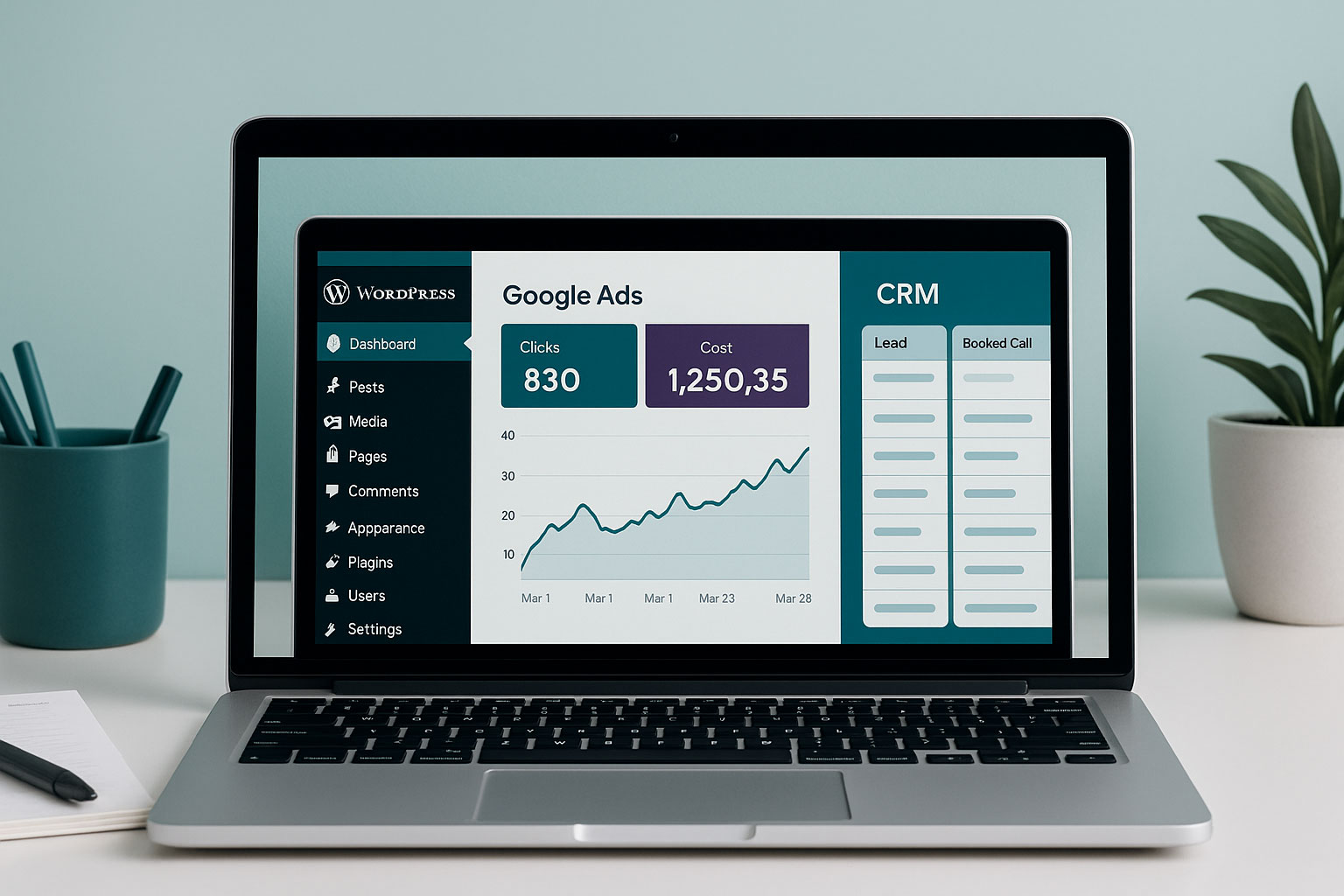Your Website, Ads, and Automation Need to Work as One: How Small Businesses Win Online in 2025
If you run a small or mid-sized business in Ontario, you’ve probably felt it:
- Your website is “okay” but doesn’t really generate leads
- You’re dabbling in Google or Meta Ads, but results feel random
- You’ve got a CRM… somewhere… but nobody trusts the data
- Follow-up happens when someone remembers, not because there’s a system
Individually, each piece is useful. Together, they’re supposed to be a growth engine.
At Marketing & Technology, that’s literally our job: connect your WordPress website, online advertising, CRM, and marketing automation into one predictable lead-generation machine.
In this post, I’ll walk through how those pieces fit together, why it matters for both SEO and generative engine optimization (GEO), and what it looks like in practice for an Ontario business.
1. Your WordPress website is the engine, not a brochure

Most small businesses still treat their website like a digital brochure: some service copy, a contact page, maybe a blog that was updated… once.
The problem? Brochures don’t sell. Systems do.
A WordPress website built for lead generation does three big things:
-
Makes it ridiculously easy for visitors to take the next step
- Clear CTAs: “Request a quote,” “Book a call,” “Get a free assessment”
- Short, focused forms that collect just enough to qualify a lead
- Mobile-first layouts (because almost every ad click is on a phone)
-
Tells a focused story that matches your traffic sources
- Dedicated landing pages for Google Ads, Meta Ads, and organic search
- Messaging that mirrors the keywords and ad copy people clicked on
- Localized content for Hamilton, the GTA, and other Ontario markets you serve
-
Plays nicely with your CRM and automation tools
- Forms and pop-ups that send contacts directly into your CRM
- Event tracking for button clicks, form submissions, and bookings
- Schema and technical SEO best practices baked into the build
Since Marketing & Technology specializes in WordPress website design, conversion optimization, and UX, your site isn’t just “pretty.” It’s built to turn visits into pipeline.
2. Online advertising: Google & Meta as your traffic accelerators
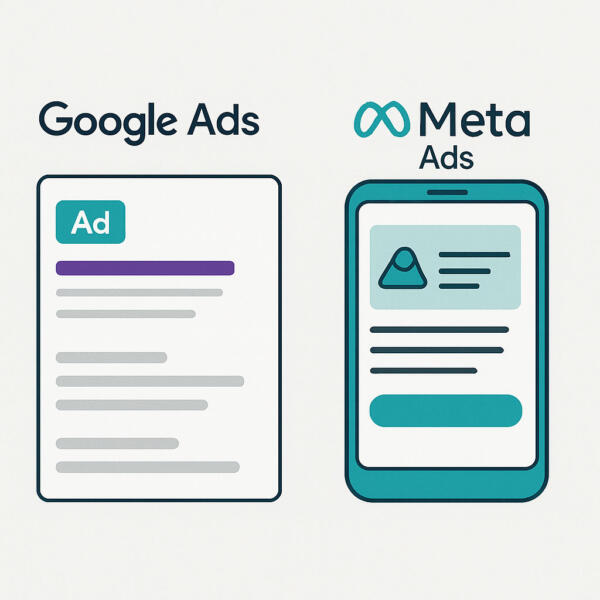
A high-converting website is powerful, but only if people actually find it. That’s where Google Ads and Meta (Facebook & Instagram) Ads come in.
Google Ads: catching high-intent demand
When someone types “home builder marketing agency Hamilton” or “managed IT services Ontario,” they’re not browsing. They’re shopping for a solution.
Google Search Ads let you:
- Appear in front of those ready-to-talk prospects
- Match your ad copy to the exact problem they’re trying to solve
- Send them to a tightly focused landing page (on that WordPress site we just talked about)
Because your agency already manages SEM/PPC campaigns, you can structure campaigns around clear business goals: cost per lead, booked appointments, and revenue, not vanity clicks.
Meta Ads: creating and nurturing demand
Meta (Facebook & Instagram) is where you can:
- Build awareness with video, carousels, and stories
- Retarget website visitors who didn’t convert the first time
- Educate colder audiences with lead magnets, webinars, or case studies
You’re not just “boosting posts.” You’re running structured campaigns that:
- Introduce your brand
- Warm people up with value-first content
- Move them toward booking a call or requesting a quote
The magic happens when Google and Meta work together. People might first see you on Instagram, forget about you, then search your brand or service on Google a week later. If both channels are dialled in, you’re there at every step.
3. CRM integration: where chaos turns into clarity
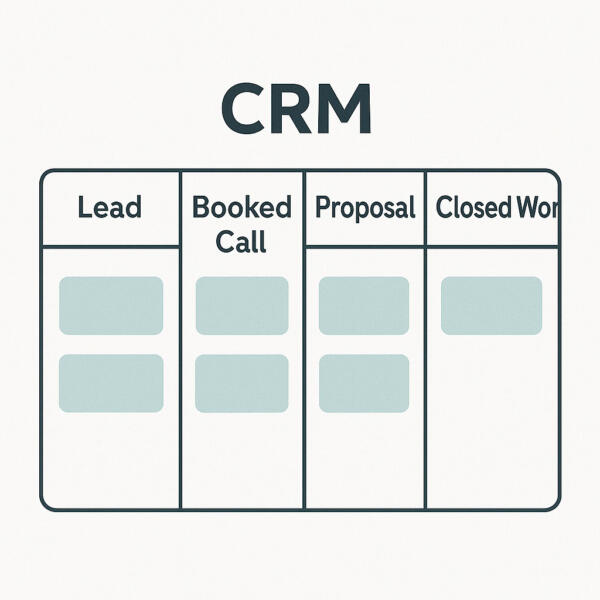
Without a CRM, your leads end up scattered:
- A few in inboxes
- A few in spreadsheets
- A few in someone’s memory
That’s how revenue leaks out.
CRM integration fixes this by making sure every lead from your WordPress forms, ad campaigns, and other channels flows into a single system of record.
With a proper CRM setup you can:
- See every lead source (Google, Meta, organic, referral, etc.)
- Track how many leads turn into opportunities and sales
- Know which campaigns are actually profitable, not just busy
Because Marketing & Technology already works with platforms like Salesforce, HubSpot, Pipedrive, and other CRMs, the real value you bring is in wiring everything together so marketing and sales finally see the same picture.
It also lays the groundwork for the fun part: automation.
4. Marketing automation: follow-up that never sleeps
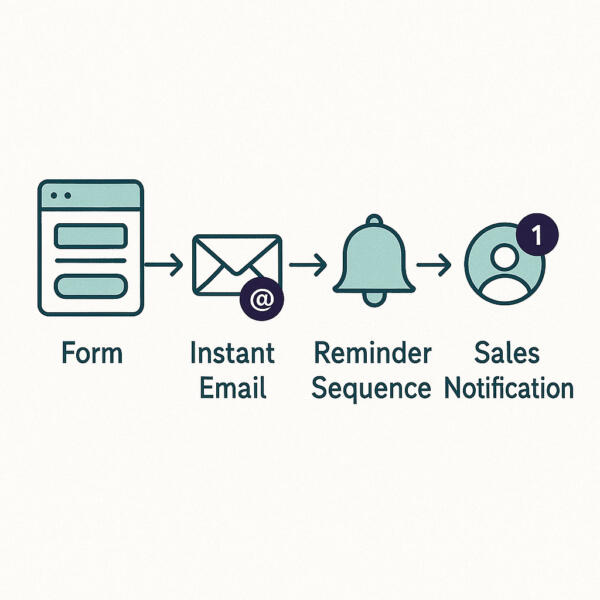
Here’s the uncomfortable truth:
You don’t need more leads if you’re not following up on the ones you already have.
That’s where marketing automation comes in.
Using tools like email workflows, SMS sequences, and task automation, you can:
- Send instant confirmation and “next step” emails after every form fill
- Nurture leads with tailored content based on their interests and behaviour
- Remind people to book, reschedule, or complete missing steps
- Alert your sales team when a prospect is “hot” (opened a key email, clicked a pricing page, watched a video, etc.)
Marketing & Technology already leans heavily into marketing automation for industries like construction, home improvement, health, and hospitality. You’ve seen how much revenue is recovered just by following up consistently.
The result for your clients is simple: More leads turn into actual conversations. More conversations turn into revenue.
5. How this setup helps with SEO and generative engine optimization (GEO)
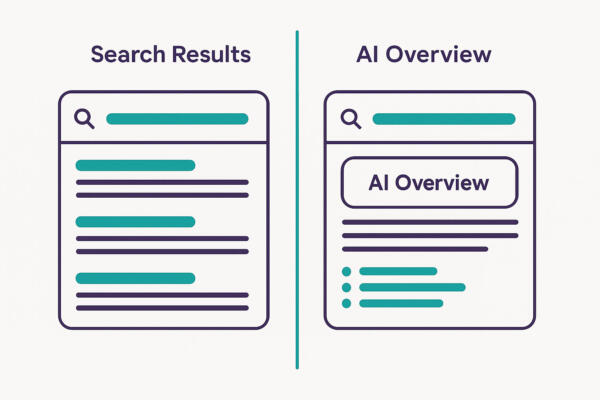
It’s easy to think SEO lives in its own little box, but in 2025, search isn’t just a list of blue links. It’s:
- Local map packs
- AI-generated overviews
- “People also ask” style questions
- Knowledge panels
- And more
A well-structured stack (site + ads + CRM + automation) actually supports both classic SEO and generative engine optimization:
- Topical authority from focused pages. Separate, in-depth pages for WordPress design, online advertising, CRM integration, and marketing automation help Google and AI overviews understand that you’re genuinely an expert in each area, not just listing buzzwords.
- Behavioural signals that show real value. When your WordPress site is conversion-focused and your automation keeps people engaged, users:
- Stay longer
- Click deeper
- Return more often
These engagement signals reinforce that your content is actually useful.
- Content that matches question-style queries. Blog posts, FAQs, and service pages that answer real questions like:
- “Do I need CRM integration for my small business?”
- “Is marketing automation worth it for a contractor?”
- “How do Google Ads and SEO work together?”
…are exactly the kind of content generative engines like to pull into their AI answers.
- Clear brand and entity signals. Consistent NAP (name, address, phone), strong local pages (like your Hamilton marketing agency content), and a clear service lineup all help search engines understand who you are and what you should rank and be cited for.
In other words, by building a properly connected digital marketing ecosystem, you’re optimizing not just for rankings, but for being the answer when AI-driven search surfaces recommendations.
6. What this looks like in real life
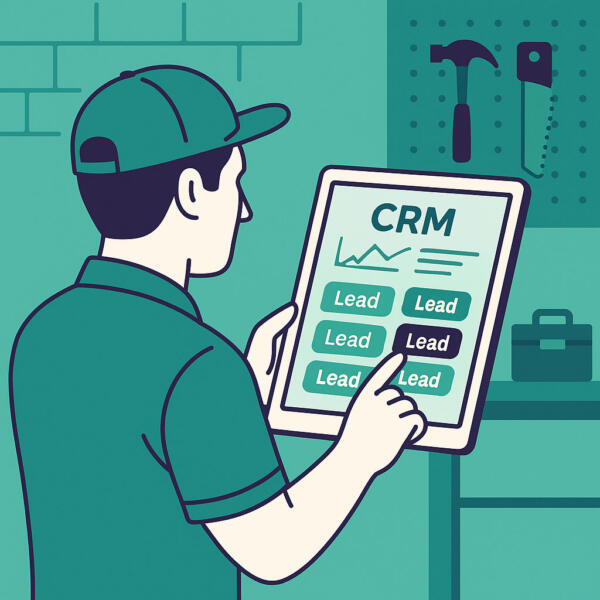
Here’s a simple example of how this could work for a home improvement company in Hamilton:
- Discover
- They find you by searching “home builder marketing agency Hamilton.”
- They land on a targeted service page that speaks directly to builders and renovators.
- First conversion
- They request a Free Marketing Assessment through a short form.
- Their details sync automatically into your CRM with source tracking (“Google Search – Home Builder Marketing”).
- Nurture
- An automation workflow:
- Sends a confirmation email
- Shares a case study from a similar industry
- Reminds them about the upcoming strategy call
- An automation workflow:
- Sales process
- Your CRM shows every touchpoint: ad click, pages viewed, emails opened.
- You tailor your conversation based on what they cared about (e.g. “You’ve clearly looked at our marketing automation section; let’s talk about fixing your follow-up”).
- Ongoing optimization
- You see that home builder campaigns on Google and Meta are driving the most profitable deals.
- You create more content and landing pages around those niches, strengthening both SEO and GEO visibility over time.
That’s the kind of system Marketing & Technology is built to deliver: not one-off campaigns, but a connected pipeline.
7. Bringing it all together for your business

If your current marketing feels like a bunch of disconnected experiments, it’s not because you’re “bad at digital.” It’s because the tools were never designed to work in isolation.
When you line things up properly:
- Your WordPress website becomes a conversion engine
- Google & Meta Ads become predictable traffic sources
- Your CRM becomes the single source of truth
- Marketing automation becomes your always-on follow-up machine
- And SEO/GEO start compounding instead of feeling random
That’s exactly what we build every day at Marketing & Technology for businesses in Hamilton and across Ontario.
If you’re ready to stop guessing and start running a connected, measurable digital marketing system, the next step is simple:
Book a free marketing assessment.
We’ll review your current setup, show you where leads are leaking out, and map a clear plan to connect your website, ads, CRM, and automation into one growth engine.

